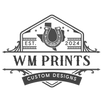In recent years, 3D printing has undergone a transformation from a niche technology to a groundbreaking advancement that is reshaping the construction industry. As we explore the evolving landscape of construction, it becomes clear how 3D printing is democratizing access to resources, reducing costs, and paving the way for innovative design possibilities.
The Rise of 3D Printing in Construction
Initially, 3D printing was mainly associated with small-scale, highly detailed models and prototypes. However, the technology has matured, and the integration of 3D printing into the construction industry promises to redefine architecture and engineering as we know it. From on-site printing of entire structures to creating custom building components, the potential applications are vast.
Cost and Material Efficiency
One of the primary advantages of 3D printing in construction is its ability to optimize material usage. Traditional construction methods often lead to a significant amount of waste, but 3D printing utilizes precise layering techniques to ensure that only the necessary material is used. This not only helps in reducing costs but also promotes sustainability by minimizing waste.
Moreover, with the ability to use a variety of materials, including recycled composites, 3D printing in construction opens up new avenues for eco-friendly building practices.
Accelerated Construction Timelines
The speed at which 3D-printed structures can be erected is another compelling factor driving its adoption. For instance, what would typically take months to build using conventional methods can potentially be completed in a matter of weeks with 3D printing. This rapid construction process is particularly beneficial in areas affected by natural disasters or regions in need of swift infrastructure development.
Innovative Design and Customization
3D printing breaks free from the constraints of traditional construction techniques, allowing for intricate designs and shapes that were previously deemed impossible or too costly. Architects and designers are now able to push the boundaries of creativity, experimenting with new forms and structures that reflect modern aesthetics and functionality.
The Future Outlook
The future of 3D printing in construction looks promising, with ongoing research and development focused on enhancing the capabilities and applications of this technology. As the industry continues to evolve, stakeholders are looking towards a future where 3D-printed smart buildings become commonplace, integrating advanced technologies such as IoT and AI for enhanced functionality and energy efficiency.
For more insights into 3D printing and its applications, visit WM Prints and explore their range of innovative products.
Product Mention
For those interested in organizing their tools, WM Prints offers a Lyman Type prep tools holder, which is an excellent addition to any workspace looking to incorporate efficiency and organization alongside 3D printing advancements.
Explore more products and learn about the potential of 3D printing by visiting WM Prints.
The construction industry is on the verge of a new era, with 3D printing playing a central role in shaping its future. As technology advances, we can expect to see more sustainable, efficient, and innovative construction methods that redefine our urban landscapes.





